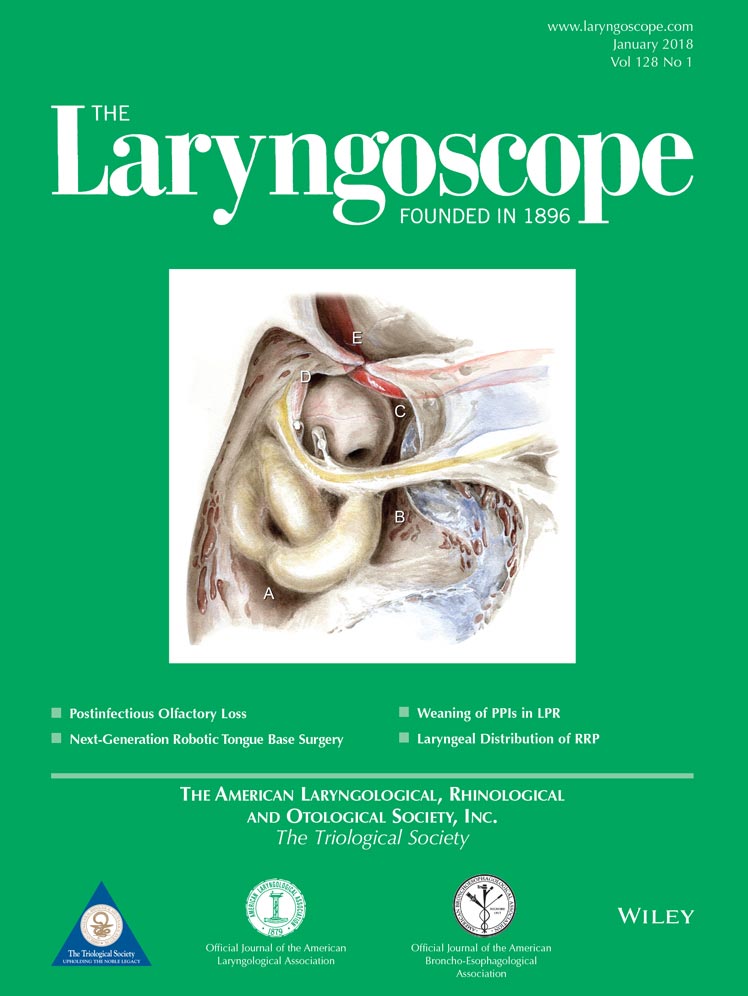The PD-1 and PD-L1 pathway in recurrent respiratory papillomatosis
Presented at the 138th Annual Meeting of the American Laryngological Association, San Diego, California, U.S.A., April 26–28, 2017.
This work was funded by the American Society of Pediatric Otolaryngology Dustin Micah Harper RRP Research Grant (s.r.a.b.), the National Institute on Deafness and Other Communication Disorders Mentored Patient-Oriented Research Career Development award 1K23DC014758 (s.r.a.b.), and the Intramural Research Program of the National Institutes of Health, National Institute on Deafness and Other Communication Disorders, project number ZIA-DC000087 (c.t.a.).
The authors have no other funding, financial relationships, or conflicts of interest to disclose.
Abstract
Objectives/Hypothesis
Generation of an immunosuppressive microenvironment may enable a persistent human papillomavirus infection in the setting of an otherwise normal immune system. We hypothesized that expression of the T-lymphocyte co-inhibitory receptor programmed death 1 (PD-1) and its ligand PD-L1 would be increased in the recurrent respiratory papillomatosis (RRP) microenvironment compared to normal controls.
Study Design
Case-control study.
Methods
Formalin-fixed paraffin-embedded respiratory papilloma and normal controls were obtained under institutional review board approval, stained for CD4, CD8, FoxP3, and PD-1, and scored by automated cell count. PD-L1 staining was scored by a blinded pathologist using an adjusted inflammation score that accounted for epithelial and immune infiltrate.
Results
Thirty-nine RRP cases and seven controls were studied. All immunologic markers demonstrated significantly increased staining in RRP specimens compared to normal controls (all P < .01). PD-1 correlated with both CD4 (P < .0001) and CD8 (P < .001) cell counts. Epithelial staining for PD-L1 (68%) and PD-L1+ infiltrating immune cells (76%) were observed in the majority of papilloma samples. The strongest staining for PD-L1 was usually observed in the basal papilloma layer adjacent to the immunologic infiltrate in the vascular core. Disease severity inversely correlated with CD8 cell counts (P = .01). A correlation between disease severity and other immunologic markers was not observed.
Conclusions
Most RRP specimens demonstrate PD-1 T-lymphocyte infiltration and PD-L1 expression on both papilloma and infiltrating immune cells. This study suggests that this checkpoint pathway may be contributing to local immunosuppression in RRP, and opens the door for clinical trials utilizing PD-blocking monoclonal antibodies.
Level of Evidence
NA Laryngoscope, 128:E27–E32, 2018




